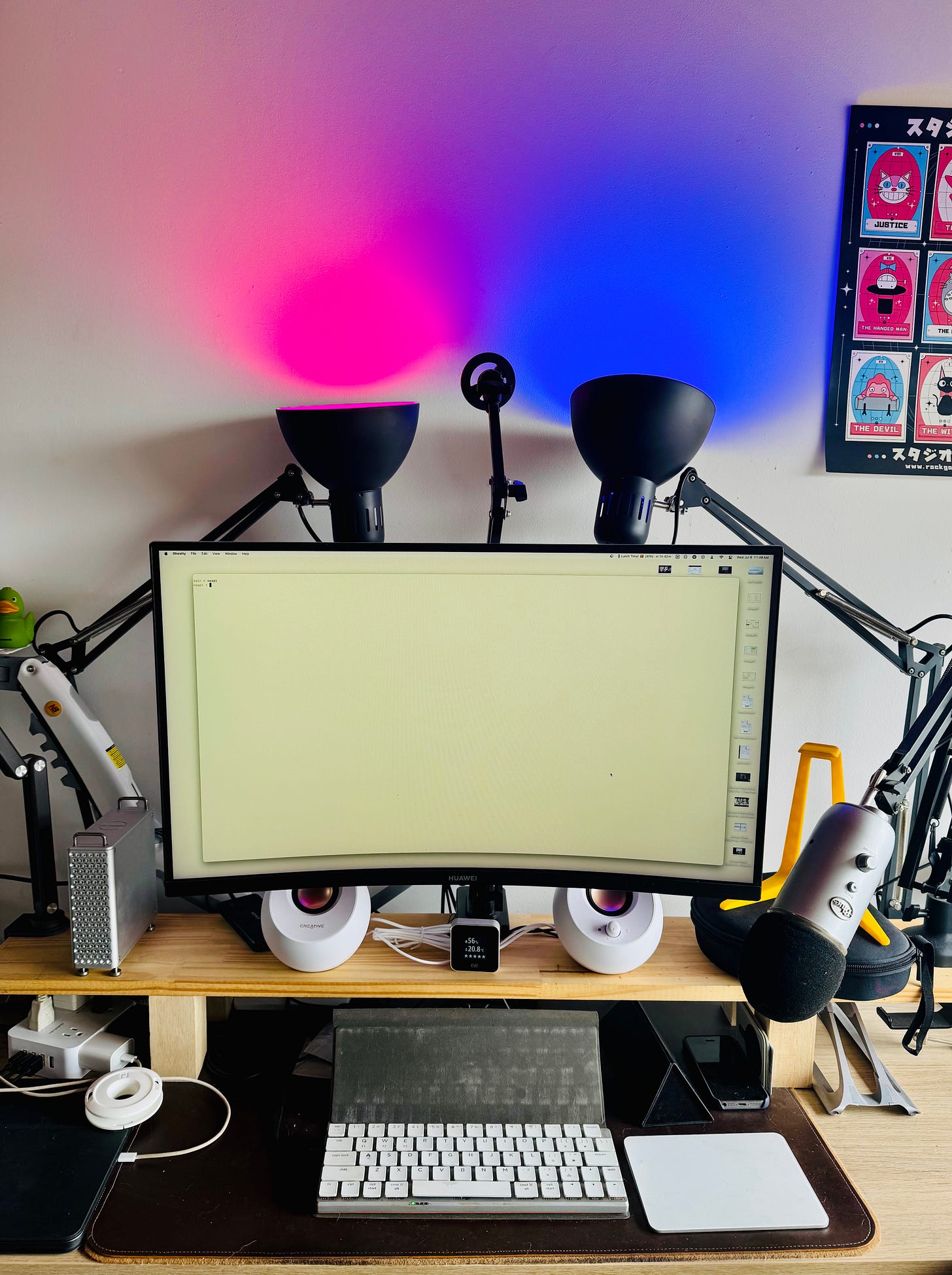42 - Oscar Cortez
Oscar is a seasoned software engineer and proud Pythonista from Nicaragua who now resides in Colombia and is a big fan of their coffee. A self-taught farmer and professional chef in his free time, he currently works at Handraise, a company that provides always-on media intelligence for narrative control. In his free time, he actively contributes to open-source projects like Django-Wiki or Django-Places. Oscar has had the privilege of working in various industries, including digital newspapers, cyber defense, healthcare, and big data. When he's not engrossed in a 30-days-old tmux session, he enjoys engaging with the community through meetups or trail running with his German shepherd dog.
Neovim & Terminal
My neovim config is pretty much based on kickstart.nvim - There's
no extra or complex configuration, it just works.I discovered the terminal world when I started my high school CS
journey. Back then, my computer was a Lenovo ThinkPad X300 with 4GB of
RAM, an i3 as a processor, and a 256 SSD running Manjaro Linux. With
those specs, I knew that wasting resources on an IDE was a luxury.
Luckily, my brain exploded when I saw fitoria & petersanchez’s power Vim & tmux usage. Something in my brain said this is the way.Most of my usage relies heavily on tmux popups. I used to be the guy
with dozens of Vim tabs and quite a few tmux windows. Popups are to me
a way to keep contextual information within a few keystrokes.
In my case, the main access to information is my editor. On this
screen, I know what and why I’m doing.
Now under the premise of easy access and tmux popups, just
`ctrl+space+j` in case I need a scratch terminal to debug or test
things
And `ctrl+space+a` if I want to play around with some AI tools
Of course modals can be stacked on top of each other
Favourite Tools
Atuin: Fast, reliable, and easy to use shell history.
Matterhorn: A feature-rich Unix terminal client for the Mattermost chat system.
Lazydocker: The lazier way to manage everything docker.
Posting: The modern API client that lives in your terminal.
Ghostty: Ghostty is a fast, feature-rich, and cross-platform terminal emulator that uses platform-native UI and GPU acceleration.
Dotfiles
You can find Oscar’s dotfiles here: https://github.com/oscarmcm/dotfiles
I don't think my dotfiles are something people can just plug and play,
but they have a few ideas that can be easily borrowed and improved.
Desk Setup
Favorite Books
Technical
why's (Poignant) Guide to Ruby: Programming books should not be boring. And this has the perfect balance between learning and having fun.
Non-Technical






